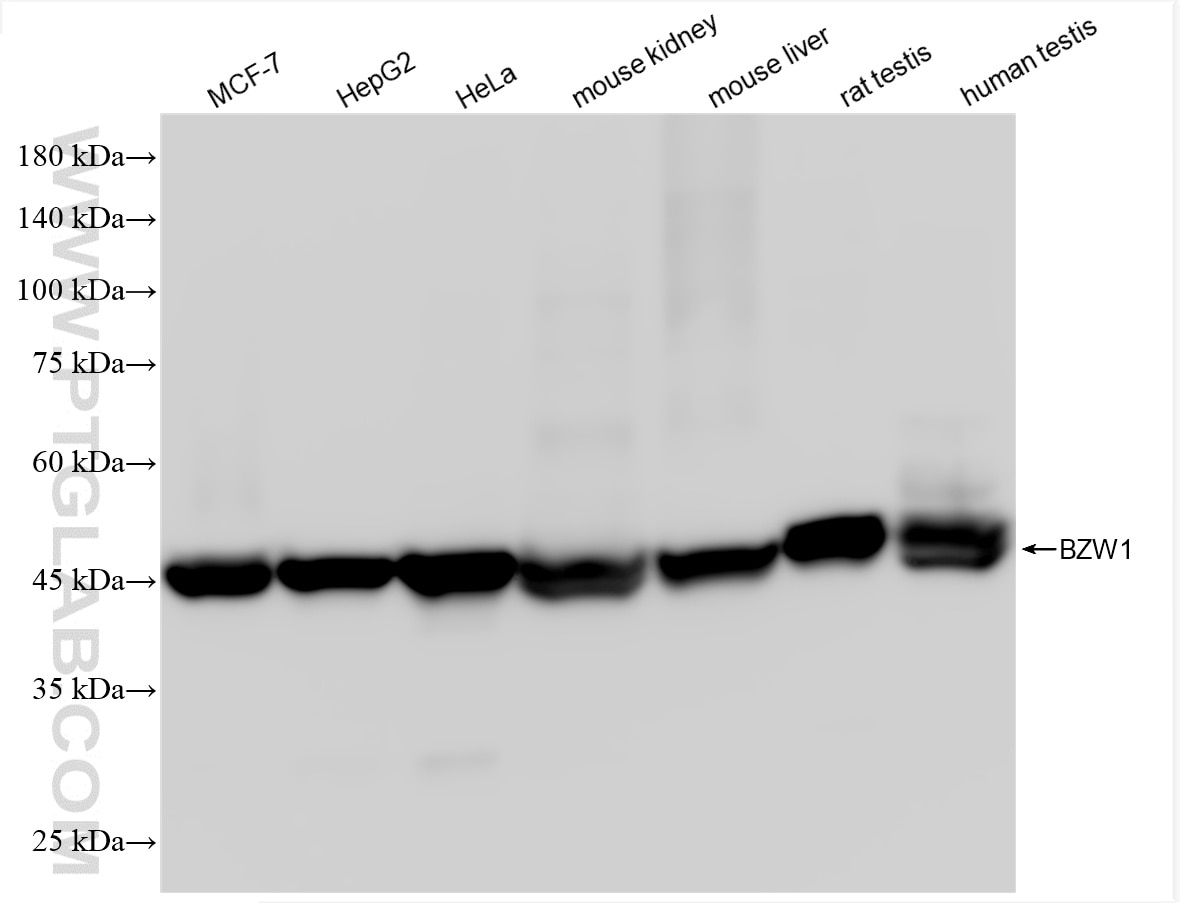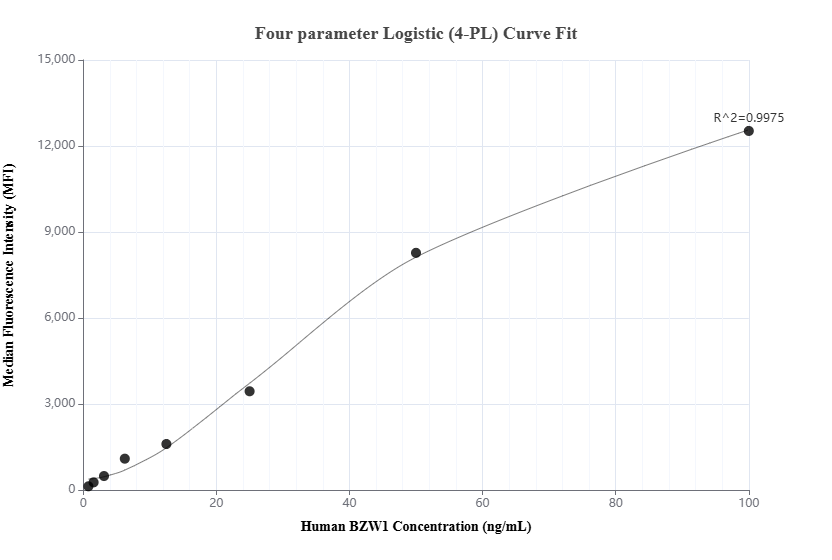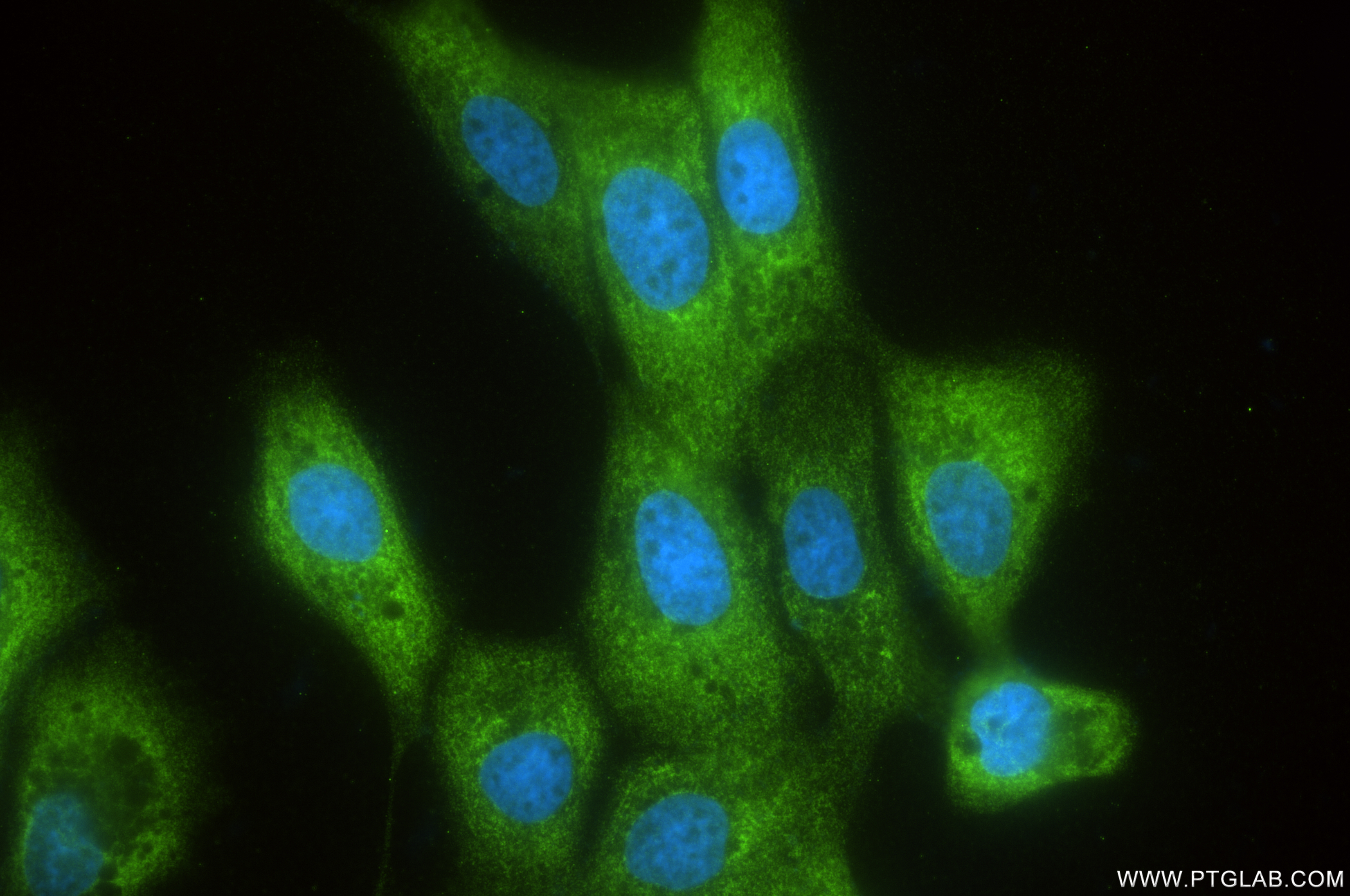Product Information
85655-1-PBS targets BZW1 as part of a matched antibody pair:
MP02022-1: 85655-3-PBS capture and 85655-1-PBS detection (validated in Cytometric bead array)
Unconjugated rabbit recombinant monoclonal antibody in PBS only (BSA and azide free) storage buffer at a concentration of 1 mg/mL, ready for conjugation. Created using Proteintech’s proprietary in-house recombinant technology. Recombinant production enables unrivalled batch-to-batch consistency, easy scale-up, and future security of supply.
This conjugation ready format makes antibodies ideal for use in many applications including: ELISAs, multiplex assays requiring matched pairs, mass cytometry, and multiplex imaging applications.Antibody use should be optimized by the end user for each application and assay.
| Tested Reactivity | human, mouse, rat |
| Host / Isotype | Rabbit / IgG |
| Class | Recombinant |
| Type | Antibody |
| Immunogen | BZW1 fusion protein Ag13830 Predict reactive species |
| Full Name | basic leucine zipper and W2 domains 1 |
| Calculated Molecular Weight | 353 aa, 41 kDa |
| Observed Molecular Weight | 45 kDa |
| GenBank Accession Number | BC001804 |
| Gene Symbol | BZW1 |
| Gene ID (NCBI) | 9689 |
| Conjugate | Unconjugated |
| Form | Liquid |
| Purification Method | Protein A purification |
| UNIPROT ID | Q7L1Q6 |
| Storage Buffer | PBS only , pH 7.3 |
| Storage Conditions | Store at -80°C. |
Background Information
BZW1, also known as basic leucine zipper and W2 domains 1, is a member of the basic leucine zipper (bZIP) superfamily of transcription factors. It is a 45 kDa protein that contains an N-terminal bZIP domain for protein interactions and a C-terminal nucleotide (ATP or GTP) binding domain. Human BZW1 can activate transcription of the histone H4 gene and serve as a co-regulator with other transcription factors to control the cell cycle. In recent years, BZW1 has been identified as enhancing phosphorylation to promote glycolysis in pancreatic ductal adenocarcinoma. Moreover, BZW1 has been found to regulate the cell cycle in ovarian cancer, thereby promoting its progression. Additionally, BZW1 plays a crucial role in mucoepidermoid carcinoma of the salivary glands. BZW1 is also involved in the regulation of translation initiation, acting as a translational rheostat and autoregulating its own translation. It has been suggested that BZW1, as well as its paralog BZW2, is an eIF5-mimic protein. BZW1 has been shown to facilitate glycolysis and promote tumor growth in pancreatic ductal adenocarcinoma through potentiating eIF2α phosphorylation, and it may serve as a therapeutic target for patients with pancreatic cancer. In macrophages, activation of BZW1 by CEBPB promotes eIF2α phosphorylation-mediated metabolic reprogramming and endoplasmic reticulum stress. BZW1 has also been found to be associated with the Wnt/β-catenin pathway in lung adenocarcinoma, potentially influencing epithelial-mesenchymal transition (EMT) processes.







